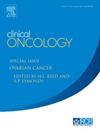A Single Centre Review of the Management of Testicular Sex Cord-Stromal Cell Tumours
IF 3
3区 医学
Q2 ONCOLOGY
引用次数: 0
Abstract
Aims
Sex cord stromal cell tumours (SCSCT) are a rare subset of testicular tumours, the majority of which are benign but a small proportion can be malignant. It has been demonstrated that certain histopathological risk factors can be useful in identifying those with malignant potential. However currently the absence of pathological risk factors is not used to exclude malignancy and this study aimed to investigate whether patients with one or fewer risk factors would relapse. We aim to confirm the hypothesis that no patient with one or fewer identified pathological risk factors predicting malignancy will develop metastatic disease.
Materials and Methods
This was a retrospective analysis of all patients from a single centre with a diagnosis of SCSCT over a 20-year period. Cases were reviewed for the presence or absence of risk factors. Relapse rates and overall survival between the groups with and without risk factors were compared using a Kaplan-Meier analysis.
Results
76 SCSCTs were identified, of which 56 were deemed low-risk due to the presence of one or fewer pathological risk factors predictive of malignancy. None of the 56 patients relapsed with metastatic disease and, when compared with the 20 patients who had 2 or more risk factors for malignancy, relapse rates were significantly higher (p < 0.0001) and overall survival lower (p = 0.0003) in those who had risk factors. A key limitation is our sample size.
Conclusion
These findings, supported by the available literature on SCSCTs, suggest that malignancy can be accurately predicted based on pathological findings. There is potential that these findings can be used to tailor follow up of low-risk patients accordingly.
睾丸性索间质细胞瘤治疗的单中心综述
目的性索间质细胞肿瘤(SCSCT)是睾丸肿瘤中一个罕见的亚群,大多数是良性的,但一小部分可能是恶性的。它已被证明,某些组织病理学的危险因素可用于识别那些有恶性潜能。然而,目前病理危险因素的缺乏并不能排除恶性肿瘤,本研究旨在探讨具有一种或几种危险因素的患者是否会复发。我们的目的是证实一个假设,即没有一个或几个确定的病理危险因素预测恶性肿瘤将发展为转移性疾病。材料和方法回顾性分析了来自同一中心的20年SCSCT诊断患者。检查病例是否存在危险因素。使用Kaplan-Meier分析比较有和无危险因素组的复发率和总生存率。结果发现了76例scsct,其中56例被认为是低风险的,因为存在一种或更少的预测恶性肿瘤的病理危险因素。56例患者中没有一例复发转移性疾病,与20例具有2种或2种以上恶性肿瘤危险因素的患者相比,复发率明显更高(p <;0.0001),有危险因素的患者总生存率较低(p = 0.0003)。一个关键的限制是我们的样本量。结论scsct的现有文献支持这些发现,提示可以根据病理结果准确预测恶性肿瘤。这些发现有可能用于相应地调整低风险患者的随访。
本文章由计算机程序翻译,如有差异,请以英文原文为准。
求助全文
约1分钟内获得全文
求助全文
来源期刊

Clinical oncology
医学-肿瘤学
CiteScore
5.20
自引率
8.80%
发文量
332
审稿时长
40 days
期刊介绍:
Clinical Oncology is an International cancer journal covering all aspects of the clinical management of cancer patients, reflecting a multidisciplinary approach to therapy. Papers, editorials and reviews are published on all types of malignant disease embracing, pathology, diagnosis and treatment, including radiotherapy, chemotherapy, surgery, combined modality treatment and palliative care. Research and review papers covering epidemiology, radiobiology, radiation physics, tumour biology, and immunology are also published, together with letters to the editor, case reports and book reviews.
 求助内容:
求助内容: 应助结果提醒方式:
应助结果提醒方式:


